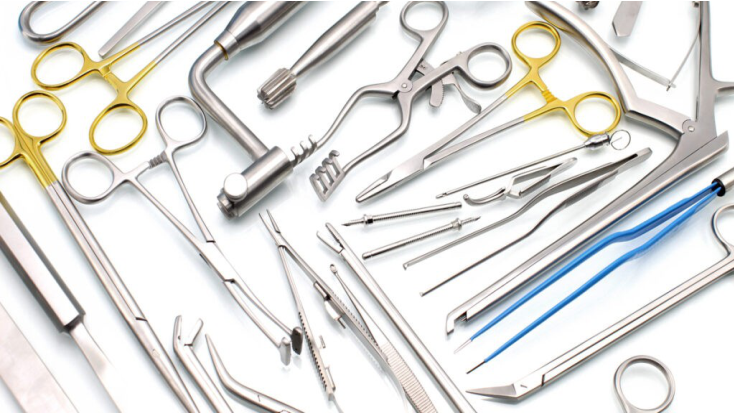Top 10 Essential Surgical Instruments for Every Operating Theatre

Top 10 Essential Surgical Instruments for Every Operating Theatre
In the world of modern medicine, surgical instruments are at the heart of every operating theatre (OT). Whether it’s a routine procedure or a complex surgery, having the right tools is critical for success. This guide explores the top 10 essential surgical instruments that every hospital, clinic, or surgical facility should include in their surgical instruments list.
We will also break down the basic surgical instruments and their uses, covering everything from common surgical tools in OT to the components of a general surgery instrument set. If you’re building or upgrading your OT, this article offers a complete guide to OT surgical instruments, helping ensure your facility is fully equipped to meet surgical demands.
1. Scalpel
A scalpel is a small, extremely sharp knife used for making incisions. It is one of the most commonly used surgical tools in hospitals due to its precision and reliability. Different types of blades (e.g., #10, #11, #15) are used depending on the type of surgery.
Use: Making skin incisions and cutting tissue.
SEO Keywords: essential surgical instruments, surgical instrument names and functions, top surgical tools for hospitals

2. Scissors (Metzenbaum and Mayo)
Surgical scissors are available in various shapes and sizes. The Metzenbaum scissors are designed for delicate tissue, while Mayo scissors are used for cutting heavier tissue.
Use: Cutting tissues, sutures, and materials.
SEO Keywords: basic surgical instruments and their uses, general surgery instrument set, most commonly used surgical tools in hospitals

3. Forceps (Tissue and Dressing)
Forceps are used for grasping, holding, and manipulating tissue. Tissue forceps often have teeth for a firmer grip, whereas dressing forceps are smooth.
Use: Holding tissue or dressing wounds.
SEO Keywords: common surgical tools in OT, hospital surgical tools checklist, surgical instruments list

4. Needle Holders (Mayo-Hegar, Olsen-Hegar)
These are clamp-like instruments used to hold needles while suturing. Mayo-Hegar is most common, while Olsen-Hegar combines a scissor function.
Use: Suturing tissues post-incision.
SEO Keywords: must-have surgical instruments for clinics, types of surgical instruments every hospital needs, surgical instrument maintenance guide

5. Retractors (Hand-held and Self-retaining)
Retractors are used to hold back tissue and organs, allowing better visibility and access during surgery. Examples include Weitlaner (self-retaining) and Army-Navy (hand-held).
Use: Retracting tissue during surgical procedures.
SEO Keywords: operating theatre instruments, surgical instruments for general surgery, top 10 surgical instruments used in operating rooms

6. Hemostats (Kelly, Mosquito)
Hemostats are clamping instruments that control bleeding by constricting blood vessels. Mosquito hemostats are smaller and used in delicate surgeries.
Use: Controlling blood flow and securing blood vessels.
SEO Keywords: surgical instruments list, what tools are used in the operating theatre, surgical tool care and maintenance

7. Gracey Set blue tatnium
The Gracey Set in blue titanium is a premium collection of periodontal instruments, widely used in dental surgeries and scaling procedures. Each curette in the set is designed with precision to adapt to specific areas of the mouth, providing optimal access to subgingival surfaces for effective plaque and calculus removal. The blue titanium coating not only offers enhanced corrosion resistance and durability but also reduces glare under surgical lighting, making the instruments more comfortable to use during extended procedures. These instruments are favored by periodontists and hygienists for their ergonomic design, lightweight feel, and lasting sharpness.

8. Speculums
These are used in procedures requiring the opening of a cavity for examination. Vaginal speculums are commonly used in gynecology.
Use: Holding open body cavities.
SEO Keywords: general surgery instrument set, complete guide to OT surgical instruments, surgical instrument names and functions

9. Trocars
Trocars are pointed instruments used to insert cannulas during laparoscopic surgery.
Use: Creating ports for minimally invasive instruments.
SEO Keywords: types of surgical instruments every hospital needs, surgical instruments list, top surgical tools for hospitals

10. Surgical Drapes and Sponges
While not instruments in the traditional sense, surgical drapes and sponges are essential to maintain a sterile field and manage blood.
Use: Infection control and fluid absorption.
SEO Keywords: how to stock an operating theatre with surgical tools, surgical instrument maintenance checklist, infection control surgical instruments

Additional Instruments to Consider
While the above list highlights the top 10 surgical instruments used in operating rooms, many other specialized tools are necessary depending on the type of procedure. These may include:
- Bone saws (orthopedic)
- Rongeurs (neurosurgery)
- Otoscopes (ENT)
- Dilators (urology)
Ensuring your facility has access to specialty instruments enhances the range of procedures you can perform effectively.
How to Stock an Operating Theatre with Surgical Tools
Properly stocking an OT involves more than just buying instruments. Here’s a checklist to guide you:
- Assess the types of surgeries performed.
- Create an inventory based on specialty needs.
- Include reusable and disposable items.
- Ensure instruments meet certification standards (ISO, CE, FDA).
- Train staff on handling and sterilization procedures.
SEO Keywords: how to stock an operating theatre with surgical tools, surgical tool care and maintenance, surgical instrument sterilization
Frequently Asked Questions (FAQs)
1. What are the most common surgical instruments used in operating theatres?
Answer: Scalpels, scissors, forceps, retractors, and hemostats are among the most commonly used surgical tools in hospitals and operating theatres.
2. How do I maintain surgical instruments for long-term use?
Answer: Regular cleaning, proper sterilization using autoclaves, and routine inspections can extend the lifespan of instruments. Use our surgical instrument maintenance checklist for best practices.
3. Are stainless steel surgical instruments reusable?
Answer: Yes, most basic surgical instruments made from surgical-grade stainless steel are designed for multiple uses, provided they are properly cleaned and sterilized.
4. How should I stock a new operating theatre with surgical tools?
Answer: Refer to a hospital surgical tools checklist and prioritize based on procedures performed. Ensure inclusion of essential, specialty, and backup tools.
5. What certifications should surgical instruments have?
Answer: Look for ISO 13485, CE marking, and FDA approvals to ensure compliance with international standards.
Conclusion
This guide provides a detailed look at the essential surgical instruments every OT needs. By understanding the surgical instrument names and functions, hospitals and clinics can make informed decisions that promote efficiency, safety, and patient care. From scalpels and forceps to retractors and suction tips, having the right tools ensures your surgical team can perform with confidence and precision.
Whether you’re updating your hospital surgical tools checklist or setting up a new facility, this surgical instruments list is your go-to reference for top surgical tools for hospitals.
Stay tuned for more in-depth blogs exploring specific instrument sets by specialty and tips on surgical instrument maintenance.
